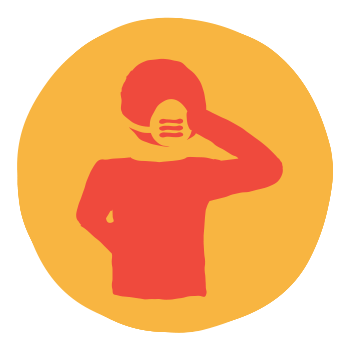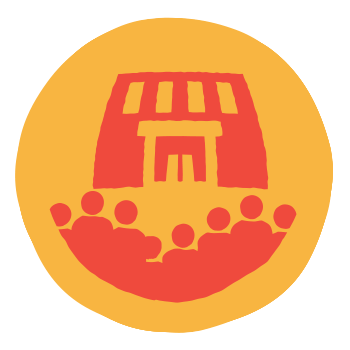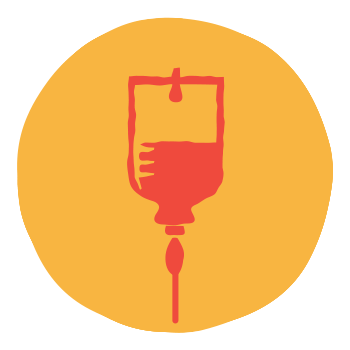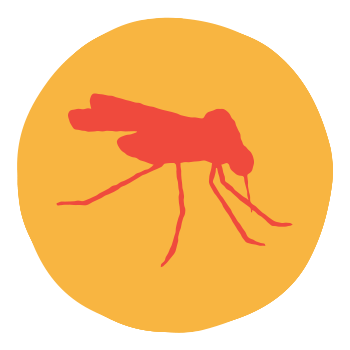A disease outbreak can arise from different sources (natural or manmade) and spread through several means of transmission involving everything from known carriers such as mosquitoes and ticks, to contaminated water and food supply or simple human contact.
Since many infectious diseases can only be treated and not cured, protection, prevention and treatment resources are critical to containing disease outbreaks. All countries require strong epidemic preparedness to effectively fight infectious disease threats when they emerge. It’s crucial that countries act quickly when responding to outbreaks—infectious disease threats do not respect borders and can travel the world in just 36 hours. Read more about 7-1-7: RAPID IMPROVEMENT FOR EARLY DISEASE DETECTION & RESPONSE
Our emergency response efforts often center on educational programs accompanied by vaccination (if one is available) and other prevention programs. Community knowledge can be the most effective component of prevention.
COVID-19: The deadly spread of the coronavirus (COVID-19) pandemic initially in China and then within just weeks globally quickly surpassed the threat from earlier virus outbreaks such as SARS and MERS and as a Global Pandemic surpassed the 1918 Flu Pandemic as it moved through four years, killing more than 6 million people. The coronavirus is spread like the seasonal cold or flu by human contact (through the air and by touch) or to a lesser degree on common surfaces where the virus can live. The speed of the outbreak is a sobering reminder of how vulnerable the world is in a time of ever increasing globalization of trade and travel. The emergence of a new threat can quickly overwhelm health systems. Good planning and prevention are critical in containing and managing these health crises. The rapid development of effective vaccines was a crucial element in fighting COVID. And reliable information from trusted sources is the frontline of those efforts. Get the facts on the COVID-19 Vaccines.
As COVID remains a threat, the annual flu season and a surge of respiratory syncytial virus(RSV) infections in children raised alarms with hospitals bracing for new cases. Vaccines are available for the seasonal flu and for RSV.
Waterborne disease might come after a flooding disaster overwhelms local sanitation and contaminates the water supply, infecting those who use the water. In the case of Haiti after the Earthquake, water contaminated by human waste combined with poor sanitation quickly spread and infected thousands of Haitians with a new strain of cholera to which they had no immunity and which a crippled health system had few resources to contain. According to the World Health Organization, there are roughly 3 million cases a year and 90,000 deaths. Patients can lose so much fluid from diarrhea and vomiting that they rapidly become dehydrated and their internal organs shut down; they can die within hours. Cholera is treatable and preventable but it has become a major health threat in places such as Yemen and Mozambique and most recently in Syria and Lebanon.
Civil conflict and other hostilities can lead to a cascade of treatable but potentially deadly outbreaks (e.g. Yemen Complex Emergency, beginning with cholera, then typhoid, and then tuberculosis). These threats generally come after the health system, safe water supplies and sanitation are damaged or disrupted. Preparation and response for such outbreaks involves purification supplies to ensure safe water and prepositioned treatment supplies such as oral and IV rehydration supplies for cholera. Treatment for cholera and other diarrheal diseases involves large quantities of sterile solutions. In response to the recent cholera outbreak in Syria and Lebanon, Americares mobilized resources to support the cholera response with partners in the regions.
In December 2013, a little boy in a village in Guinea, became ill and died just a few days later. This death, unnoticed at the time by few beyond family and neighbors, set off a horrific Ebola outbreak in West Africa, infecting over 26,900 people and killing more than 11,000. In the case of something as deadly as Ebola, new treatment centers and specialized training with protective equipment were necessary to meet this unexpected menace in countries with few or no resources to stop the epidemic. Another Ebola outbreak appeared more recently in the Democratic Republic of Congo that threatened to expand beyond the borders of the country. More than 1,000 people died in this outbreak which was exacerbated by violence in the region affecting health workers.
Where there is standing water and significant rain, mosquitoes can breed and thrive. And in various regions of the world, they can carry painful and sometimes deadly diseases such as chikungunya, dengue and malaria, transmitted through a bite into the human bloodstream. The list of mosquito borne diseases continues to grow as newer threats like Zika appear with dangerous longer term effects. In the ongoing complex emergency in Yemen, Americares continues to support partners in country as they battle outbreaks of dengue. Since these diseases are not easily treated or cured, preparing and responding involves various methods of mosquito control and protection from mosquito bites. And we must now consider the impact of climate change on the spread of mosquitoes and the diseases they carry. “Researchers believe as many as a billion people could be newly exposed to these illnesses within the century if climate change goes unchecked” (NPR story on study in PLOS Neglected Tropical Diseases)
Mpox (formerly called Monkeypox) has been in the news – the latest outbreak of the disease spread among people in more than 40 countries, most often causing mild illness and a skin rash with blisters, before subsiding. Like other, more deadly diseases, including bubonic plague, Ebola, HIV, influenza, rabies and even COVID-19, the mpox virus originated in animals.
When people come into close contact with infected animals – at marketplaces, farms or even in their own kitchens – bacteria or viruses can spread to and between humans, causing disease. These cross infections among people and animals leading to diseases are referred to as zoonotic diseases. Pressures from climate change make crossover infections more likely.
To keep people and communities safe from zoonotic diseases, Americares provides education, letting people know how proper hygiene and sourcing and handling of animal as well as food and water sources, can prevent the spread of bacteria and viruses. More than 150 village health committee members around Majete Wildlife Reserve and Liwonde national park in Malawi received training in workshops through Americares support to share in their communities.
Some diseases that had essentially been nearly eliminated such as Polio and Measles have returned as anti-vax sentiments have created new avenues for their return in new generations of children. Americares long-term programs of support for vaccination programs are being strengthened in light of this trend.

A sudden outbreak of infectious diseases such as Ebola overwhelms local health systems.
Coordination with local and international health authorities, health care providers and other NGO partners to provide medicine and supplies and even temporary facilities and staff to handle the surge of those infected.

Infection of health workers further weakens the health system.
Provide protective gear and supplies to limit the exposure of health workers, along with support for more health workers from our Medical Outreach program and other health partners or our Emergency Response Roster to augment the local health system.

Disease outbreak diminishes health centers’ capacity to treat normal health issues along with a loss of trust in the health system.
Building capacity with emergency medical teams helping to manage the surge along with outreach through community health workers and volunteers to reassure the community that regular and safe care is available.

In the case of diarrheal disease, limited availability of IV solutions and supplies – the primary treatment for the disease.
Pre-positioning of rehydration solutions and supplies such as “cholera kits” or local sourcing so that the logistics of shipping large quantities of fluid via sea container does not delay the response to a disease that can kill within hours if untreated.

Disease continues to spread and infect more people.
Working with the Ministry of Health, engage community members and local authorities in tracking the people infected and their contacts. Then focus on community outreach and education to teach WASH and provide other appropriate disease prevention information and supplies. Support an immunization effort if a vaccine is available.

Mosquito borne disease outbreak. (e.g. Zika)
Focus on mosquito control measures through community education and distribution of key supplies including mosquito nets, repellant, protective clothing and eradication equipment.

Emergency programs at Americares represent a continuous cycle of Ready, Respond, Recover and then get Ready again, only better. Each disaster presents a new set of challenges to lay the foundation for a better response the next time around. It is a dynamic process, ever changing as more extreme weather and unforeseen manmade crises arise – always demanding that we increase our knowledge and capabilities. In that work, we are ever mindful and incredibly grateful for the ongoing support of our donors and the presence of local partners who have the ground sense and skill necessary to meet the challenges and often only lack resources to prepare for them.
